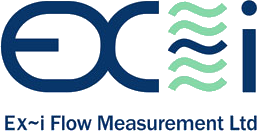Steam flow measurement can improve energy efficiency; therefore it has increased in interest. Before you start to measure steam flow rate it is beneficial to know the different options of flow metres to improve accuracy depending on its use.
Differential Pressure Flow Meter
Differential pressure (DP) flow meters measure the flow of steam through a pipe. A manmade constriction within the pipe creates a pressure drop and when the pressure flow increases, the pressure drops further.
The pressure drop across the constriction corresponds to the square of the flow rate. The upstream and downstream pressures are routed by impulse piping and the transmitter measures the difference between the two pressures to determine the flow of the steam.
Advantages:
• Low pressure drop remains constant across the operating range of the meter
• Covers a wide range of temperatures and pressures
• Easily converted to handle flows of different fluids and gases
• Easy to read, install and maintain
• Self-cleaning
Turbine Flow Meters
Steam passing through angled rotor blades creates rotational energy in a turbine flow meter. It hits the blades with enough force to quickly send the blades spinning – the quicker the steam moves, the faster the rotor spins and each rotor blade generates more pulses. When the rotation speed is steady, the speed corresponds to the steam velocity. The pulse signal is detected by the transmitter in order to determine the flow of the steam.
Advantages:
• Wide flow range ability including low flow rates
• Good level of accuracy
• Simple, durable construction and easy to install and maintain
• Operates over a wide range of temperatures and pressures
• Provides a convenient signal output
Variable Area Flow Meter (Rotameter)
A variable area flow meter is a long shaped glass tube with a float placed inside. As steam passes through the tube the float rises and the position can be read as the flow rate. The shape of the float causes it to rotate and provide self-stabilisation.
Advantages:
• Requires no external power or fuel, uses only the properties of the fluid or gas and gravity to measure the flow rate
• Cost-effective
• Simple installation, handling and maintenance-free
• Independent operation
Vortex Shedding Flow Meter
As steam is shredded around an obstruction (strut) in this flow meter, vortex vortices (swirls) are created. Over a range of flows, the frequency of the alternating shedding corresponds to the flow rate and velocity of the steam flow. Vortex vortices are made when the steam encounters a strut (obstruction); the steam separates and travels around it creating vortices around either side of the strut. These vortices can be detected, counted and displayed.
When the vortices are forced around the strut it induces a change in the steam direction and its velocity. The steam nearest to the strut experiences friction from the strut and slows down. The steam further away from the strut is forced to accelerate in order move the steam through the reduced space (area reduction between the strut and pipe diameter). Once the steam has passed the strut it strives to fill the space causing a rotational motion creating a spinning vortex. An ultrasonic, electronic, or fiber optic sensor monitors the changes in the vortex pattern and the rate of the vortex shedding and transmits an output signal of pulses into readable data.
Advantages:
• Little resistance to flow
• Reasonable turndown (high velocities and high pressure drops are acceptable)
• No moving parts
• High temperature and pressure proof
